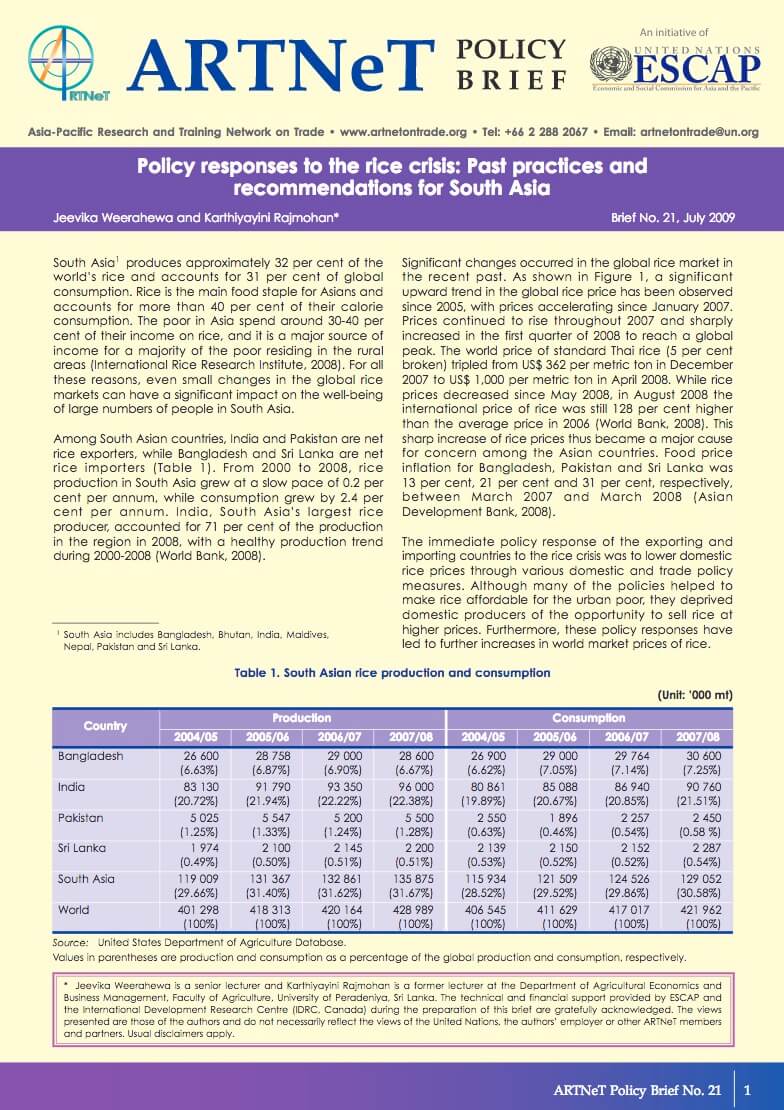Policy responses to the rice crisis: Past practices and recommendations for South Asia

South Asia 1 produces approximately 32 per cent of the world’s rice and accounts for 31 per cent of global consumption. Rice is the main food staple for Asians and accounts for more than 40 per cent of their calorie consumption. The poor in Asia spend around 30-40 per cent of their income on rice, and it is a major source of income for a majority of the poor residing in the rural areas (International Rice Research Institute, 2008). For all these reasons, even small changes in the global rice markets can have a significant impact on the well-being of large numbers of people in South Asia. Among South Asian countries, India and Pakistan are net rice exporters, while Bangladesh and Sri Lanka are net rice importers. From 2000 to 2008, rice production in South Asia grew at a slow pace of 0.2 per cent per annum, while consumption grew by 2.4 per cent per annum. India, South Asia’s largest rice producer, accounted for 71 per cent of the production in the region in 2008, with a healthy production trend during 2000-2008 (World Bank, 2008).
